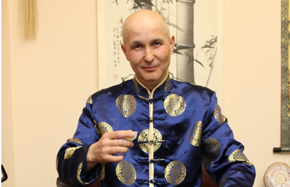Sign of a dangerous obsession
Japan's new warship evokes the most aggressive period of the country's imperial past and displays its growing militarism

While Japanese people prayed for peace on Tuesday to commemorate the 68th anniversary of the atomic bombing of Hiroshima during World War II, the Shinzo Abe administration was noisily reawakening some of the ghosts of Japan's militarist past.
It held a high-profile ceremony to unveil a new helicopter carrier called Izumo, which is named after a cruiser used as a flagship during Japan's war of aggression against China in the 1930s.
The Abe administration has claimed the clash of the dates was just "a coincidence", which prompted Agence France Presse to comment that it was indeed "an unfortunate coincidence".
But on top of this coincidence and the provocative choice of name, the Japanese government is playing with words and trying to call a stag a horse.
Japanese officials are calling the ship, which is the country's biggest warship since World War II, a destroyer rather an aircraft carrier and say it will not be used to launch military jets. However, the 250-meter ship has a flat top, which functions as a flight deck like an aircraft carrier. And even though it does not have a catapult or "ski-jump" ramp for launching fighters, it could easily carry vertical take-off aircraft, or with only slight modifications combat aircraft such as the F-35B.
In fact, the vessel is only 13 meters shorter than the French aircraft carrier Charles de Gaulle, and its standard and load displacements are far bigger than those of the light carriers of some countries.
Despite the attempts to deny what it is, the truth in front of our eyes is indisputable and reveals itself clearly before the mirror of history.
Naming the ship Izumo represents a clear evocation of the most aggressive period of Japan's imperial past, and the association strengthens the impression that Japan is moving full steam ahead toward militarization.

























